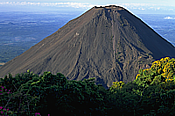SMITHSONIAN MICROBEAM STANDARDS
SMITHSONIAN MICROBEAM STANDARDS
The Jarosewich microbeam reference materials.
Introduction
Largely because of the work of Eugene Jarosewich, reference samples for microbeam analysis have been characterized and distributed worldwide. As of 2002, 750 requests totaling about 11,000 samples have been made. Although not technically standards, these reference materials are referred to as the Smithsonian Microbeam Standards (SMS). A short history of the SMS by Gene (Jarosewich 2002) and other publications relating to these materials can be found at the links and reference below.
References:
Jarosewich (2002) Smithsonian Microbeam Standards [download PDF]
Jarosewich et al. publications on the SMS: [download PDF]
Jarosewich et al.(1980) Reference Samples for Electron Microprobe Analysis
Jarosewich and McIntyre (1983) Carbonate Reference Samples for Electron Microprobe and Scanning Electron Microscope Analysis
Jarosewich and White (1987) Strontianite Reference Sample for Electron Microprobe and SEM Analyses
Jarosewich et al. (1987) Chromium Augite- A New Microprobe Reference Sample
Jarosewich and Boatner (1991) Rare-Earth Element Reference Samples for Electron Microprobe Analysis
Carpenter et al., (2002) Characterization of Corning EPMA Standard Glasses 95IRV, 95IRW, and 95IRX [download PDF]
Vicenzi et al. (2002) Microbeam Characterization of Corning Archeological Reference Glasses: A New Addition to the Smithsonian Microbeam Standard Collection [download PDF]
Donovan et al. (2002) Contamination in the Rare-Earth Element Orthophosphate Reference Samples [download PDF]
Donovan et al. (2003) A re-examination of the rare-earth-element orthophosphate standards in use for electron-microprobe analysis. Canadian Mineralogist Vol.41, pp. 221-232.
Availability and standard materials requests.
The Smithsonian Microbeam Standards are available free of charge. The Smithsonian Institution Department of Mineral Sciences should be acknowledged in any publication in which the standard materials have been used. Refer to the materials in publications by the letters NMNH or USNM (as listed) followed by the catalog number (example: NMNH 137041). Because there is a limited quantity of each standard, please request only materials required for your study. Some materials are in short supply and will become unavailable in the future.
To request reference materials contact Amelia Logan, Tim Rose or Ed Vicenzi of the Department of Mineral Sciences. You will be required to sign, date and return the indicated copy of the shipping invoice to the Smithsonian Institution acknowledging receipt of the materials.
This table lists the materials available.
Impurities in the Smithsonian Microbeam Standards
The following table lists impurities observed in reference samples from the Smithsonian Microbeam Standards (SMS). The impurities as they were referred to by Jarosewich et al. (1980), are grains of other minerals and inclusions in individual grains of the original minerals or glasses chosen to become SMS. Additions to this will be made as they are identified. Please contact Tim Rose for further information or of additional impurities so that we may add them to the list.
| SMS | impurities | abundance |
| augite (USNM 1221420) | grains with lower Na, Al and more Fe,Mg, Ca | rare |
| diopside (USNM 117733) | calcite/barite inclusions apatite pyrite |
common rare rare |
| fayalite (USNM 85276) | amphibole (grunerite?) | 10% of grains, some intergrown |
| glass VG-2 (USNM 111240) | olivine: tiny crystals plagioclase: large crystal |
common on one grain |
| glass A-99 (USNM 113498) | plagioclase: tiny clinopyroxene: tiny |
common rare |
| Glass VG-568 (USNM 72854) | Fe oxide: 5 micron crystals | common |
| hornblende (USNM 143965) | FeTi oxide: tiny crystals in inclusions FeTi oxide: larger individual crystals |
abundant rare |
| hypersthene (USNM 746) | chromite veins and included crystals | common |
| ilmenite (USNM 96189) | NbFeTi oxide Nb and Zn phases |
abundant tiny rare |
| magnetite (USNM 114887) | ilmenite | rare |
| microcline (USNM 143966) | albite: included crystals | rare |
| omphacite (USNM 110607) | different CaNaMgAl silicate enclosed in jadeite |
Backscattered electron image of grains of the SMS fayalite reference material. About ten per cent of the grains are a darker gray color. Preliminary data suggest the impurity is an amphibole, possibly grunerite, a mineral found associated with the fayalite from Rockport, Massachusetts chosen to become the reference material.
Backscattered electron image of multiphase grain in the SMS fayalite reference sample.
Backscattered electron image of multiphase inclusion in ilmenite. The inclusion consists of: gray: iron oxide; white: a niobium-bearing oxide phase and black: a zinc-aluminum oxide phase.
Cathodoluminescence of Smithsonian Microbeam Standards
Cathodoluminescence (CL) has been observed in Smithsonian Microbeam Standards (SMS) listed in the table below. These data were collected on a NovaNanoSEM 600 with a Gatan MonoCL/Xiclone system at room temperature. Operating conditions were 15kV and typically about 2 namps. Further study of the CL of these materials is underway. The spectra from these materials will be made available in the future.
| SMS | peak positions |
| anorthite (NMNH 137041) | 425, 550, 710, 855 |
| anorthoclase (NMNH 133868) | 360, 610, 860 |
| apatite (NMNH 104021) | 370, 410, 450, 480, 580, 610, 650 |
| benitoite (NMNH 86539) | 420 |
| calcite (NMNH 136321) | 370, 615 |
| corundum (NMNH 657S) | 330, 575, 728 |
| plagioclase (NMNH 115900) | 460 |
| quartz (NMNH R17701) | 650 |
| scapolite (NMNH R6600-1) | 360, 610, 860 |
| strontianite (NMNH R10065) | 320, 380, 520, 550, 600, 640, 850 |

- Panchromatic CL image of benitoite.

- Serial spectrum of CL of strontianite.



